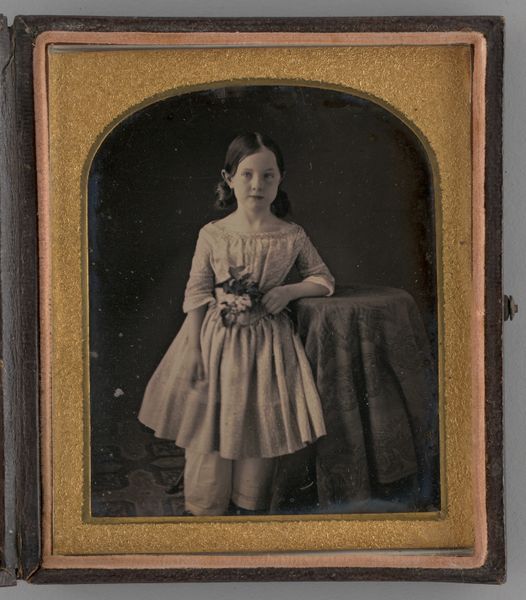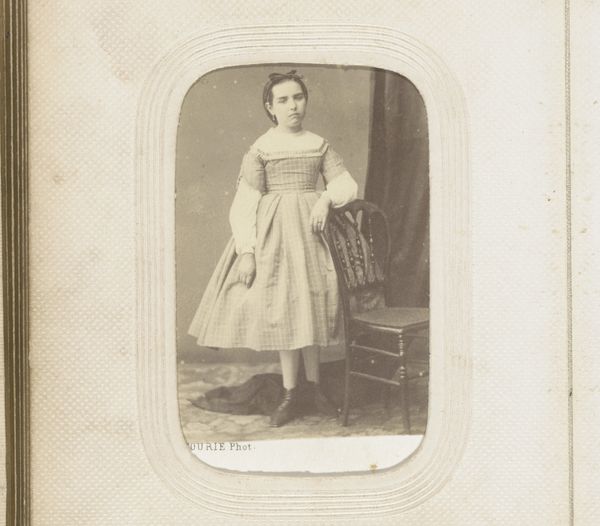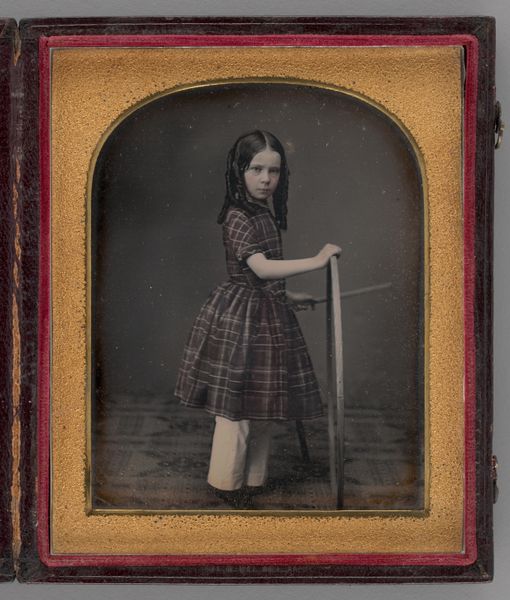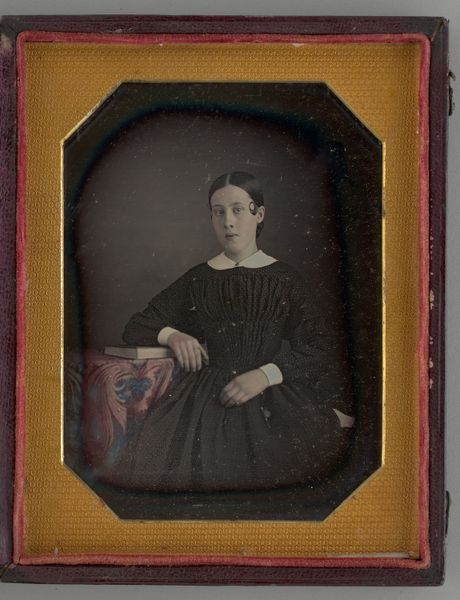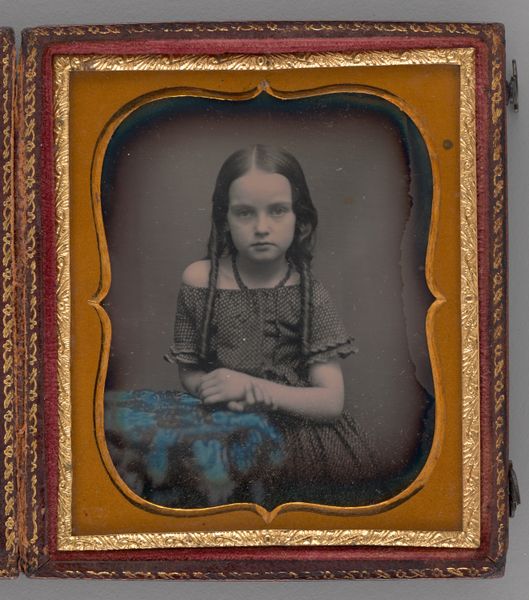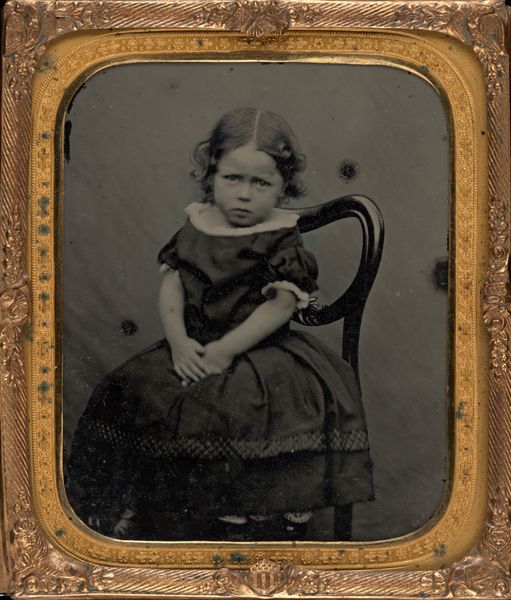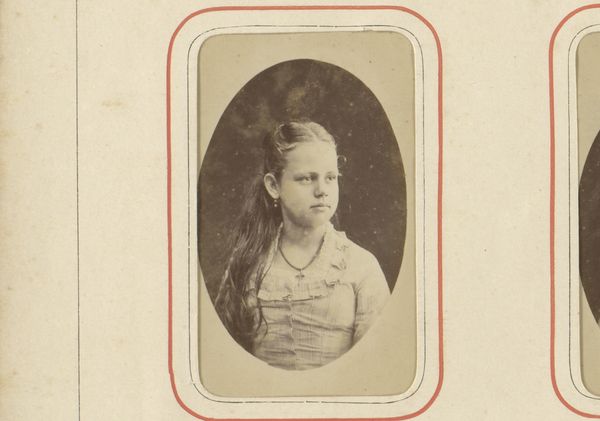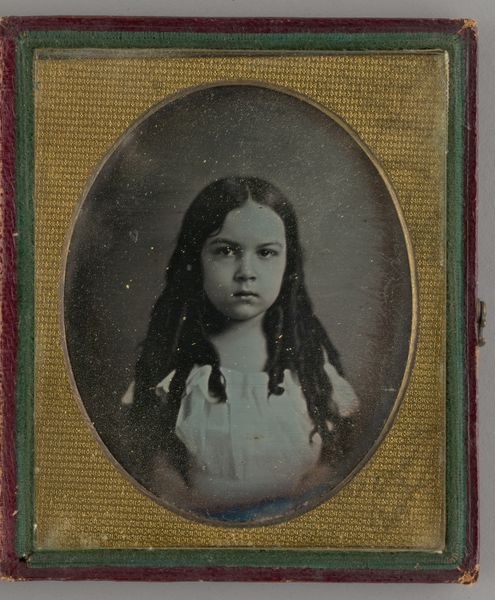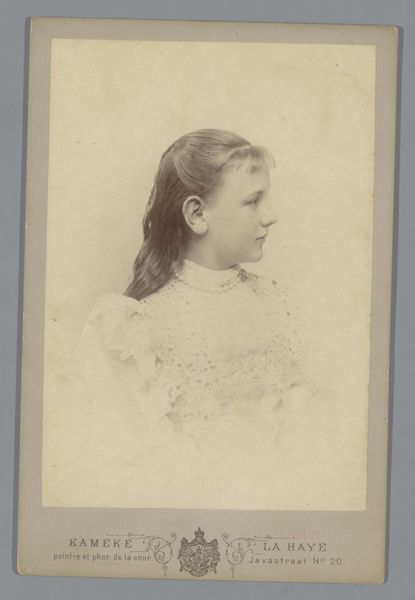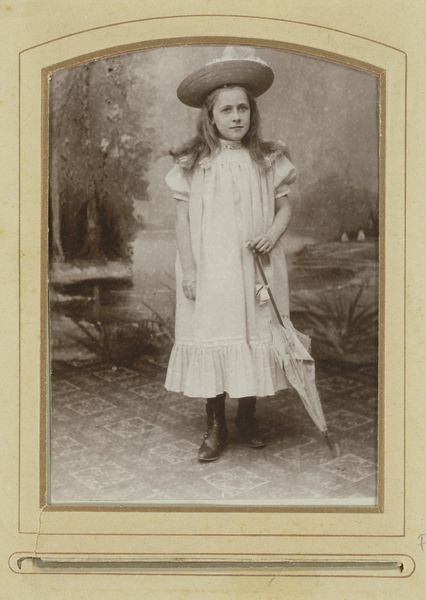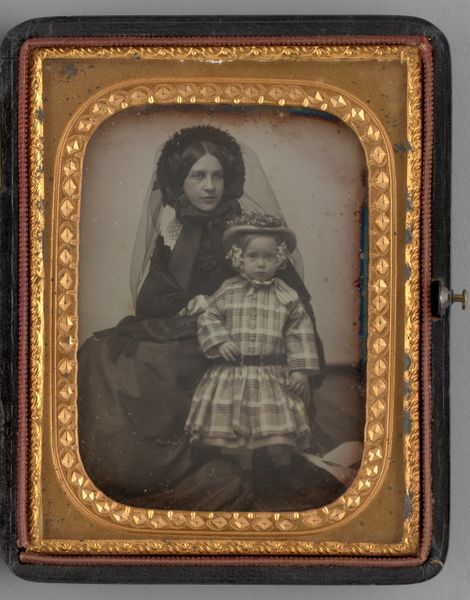
daguerreotype, photography
#
portrait
#
toned paper
#
daguerreotype
#
photography
#
oil painting
#
coloured pencil
#
portrait art
Dimensions: image (visible): 9.2 × 6.2 cm (3 5/8 × 2 7/16 in.) mat: 11 × 8.6 cm (4 5/16 × 3 3/8 in.) case (closed): 12.2 × 9.2 × 1.4 cm (4 13/16 × 3 5/8 × 9/16 in.)
Copyright: National Gallery of Art: CC0 1.0
Curator: This daguerreotype, known as "Portrait of a Girl," was created by William Edward Kilburn around the late 1840s. Notice how this photographic process captures not just an image but a moment laden with early Victorian societal expectations. Editor: Right. My first thought? That poor kid. She looks utterly serious, trapped somehow in a bygone era. There's a strange stillness to it all. Curator: Precisely. Think about the sitter’s clothing and posture: the long-sleeved dress, the tied bow at the neck, the carefully posed stance beside the chair. All of this reinforces ideals of restraint and domesticity expected of young women in this period. It also speaks to the economic status of her family that they could afford a portrait such as this. Editor: Absolutely. There's this interesting tension, isn’t there? I see the formality, of course. But beneath it, I imagine some spirited girl longing to climb trees. It feels like a little piece of life encased in amber, longing for liberation. Curator: Indeed. And considering Kilburn was also known for photographing royalty like Queen Victoria and Prince Albert, seeing that same formal structure applied to a child portrait raises questions about childhood as a social construct, performance and expectation. The backdrop even reminds one of an outdoor painting that could be in the royal court. Editor: It’s heartbreaking, in a way. The forced conformity, even in such youth. Do you ever wonder what she actually dreamt about? Maybe the artificial landscape behind her—that dreamy blue sky—represents the imaginative escapes she needed. I want to shake her free of the picture and offer her a bicycle. Curator: A sentiment which reveals much about our own contemporary relationship to notions of girlhood. And what is seen in it today is undoubtedly far from how audiences would have seen it almost two centuries ago. But as you mention, this interplay—between historical artifact and modern resonance—offers critical dialogue, allowing us to reconsider societal constructs of both past and present. Editor: Maybe she did learn to ride a bike, eventually. That’s my story, anyway. I choose to believe she got her escape. This photograph has that sort of melancholy and hopeful quality, all captured on a tiny silvered plate.
Comments
No comments
Be the first to comment and join the conversation on the ultimate creative platform.
